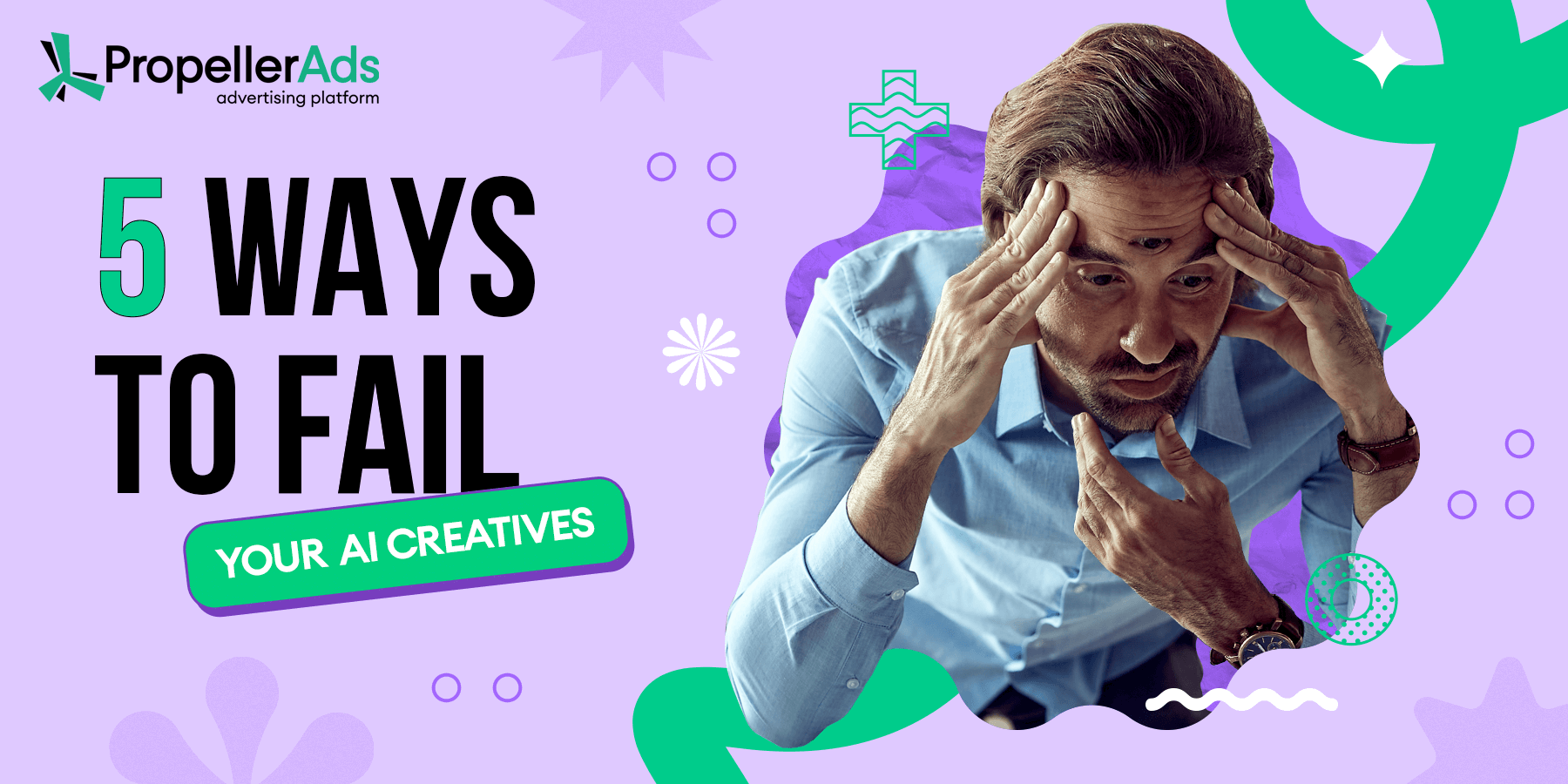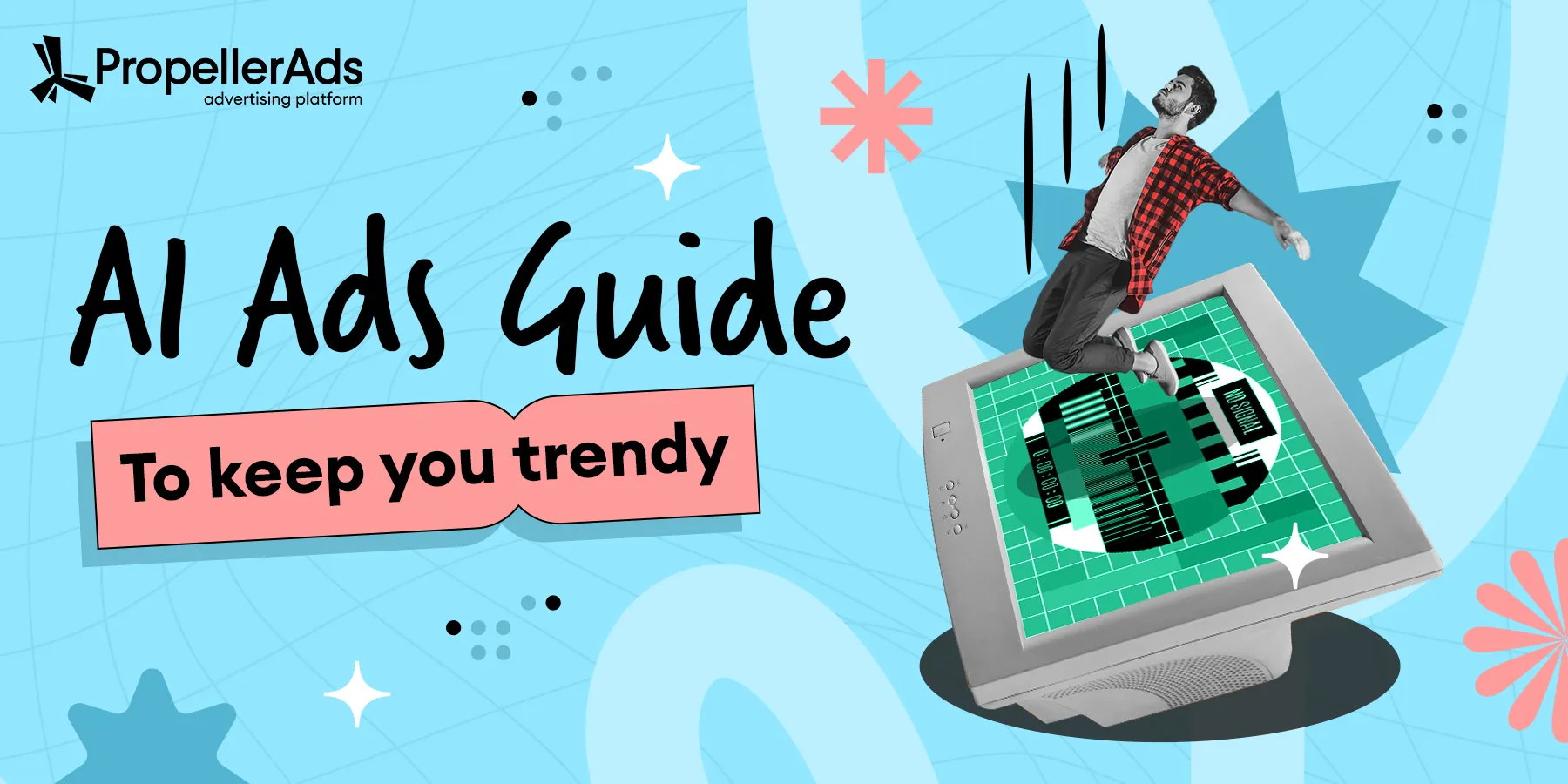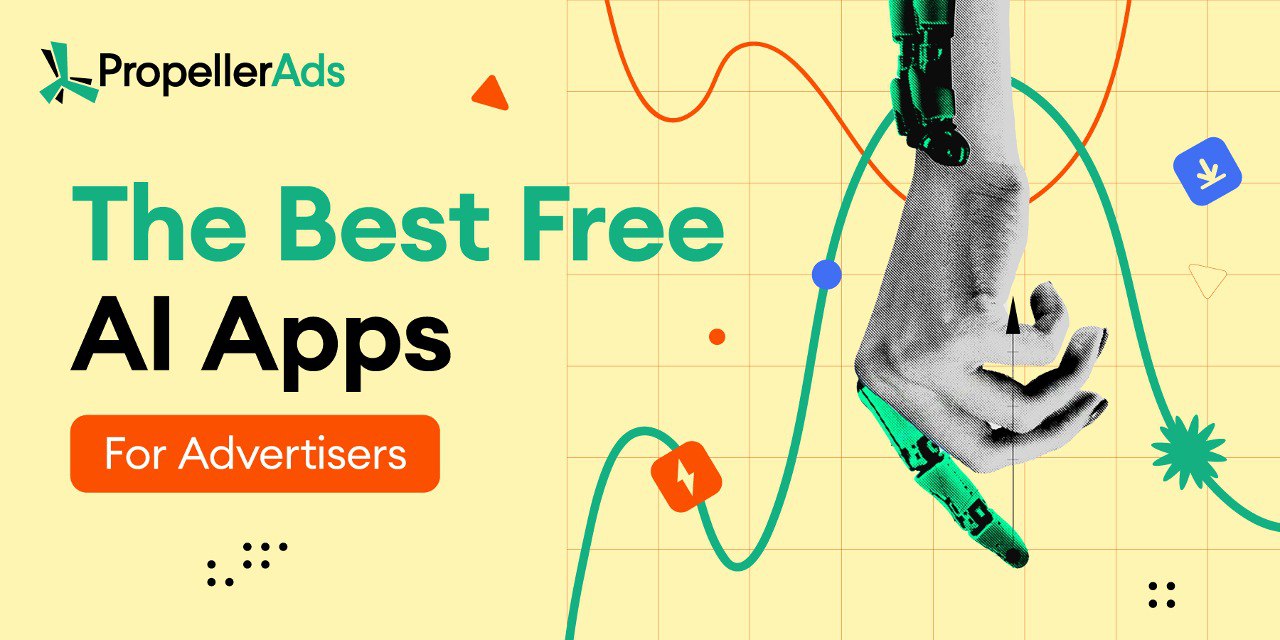‘AI Does It Better’: Can AI Assistants Replace You as a Media Buyer?
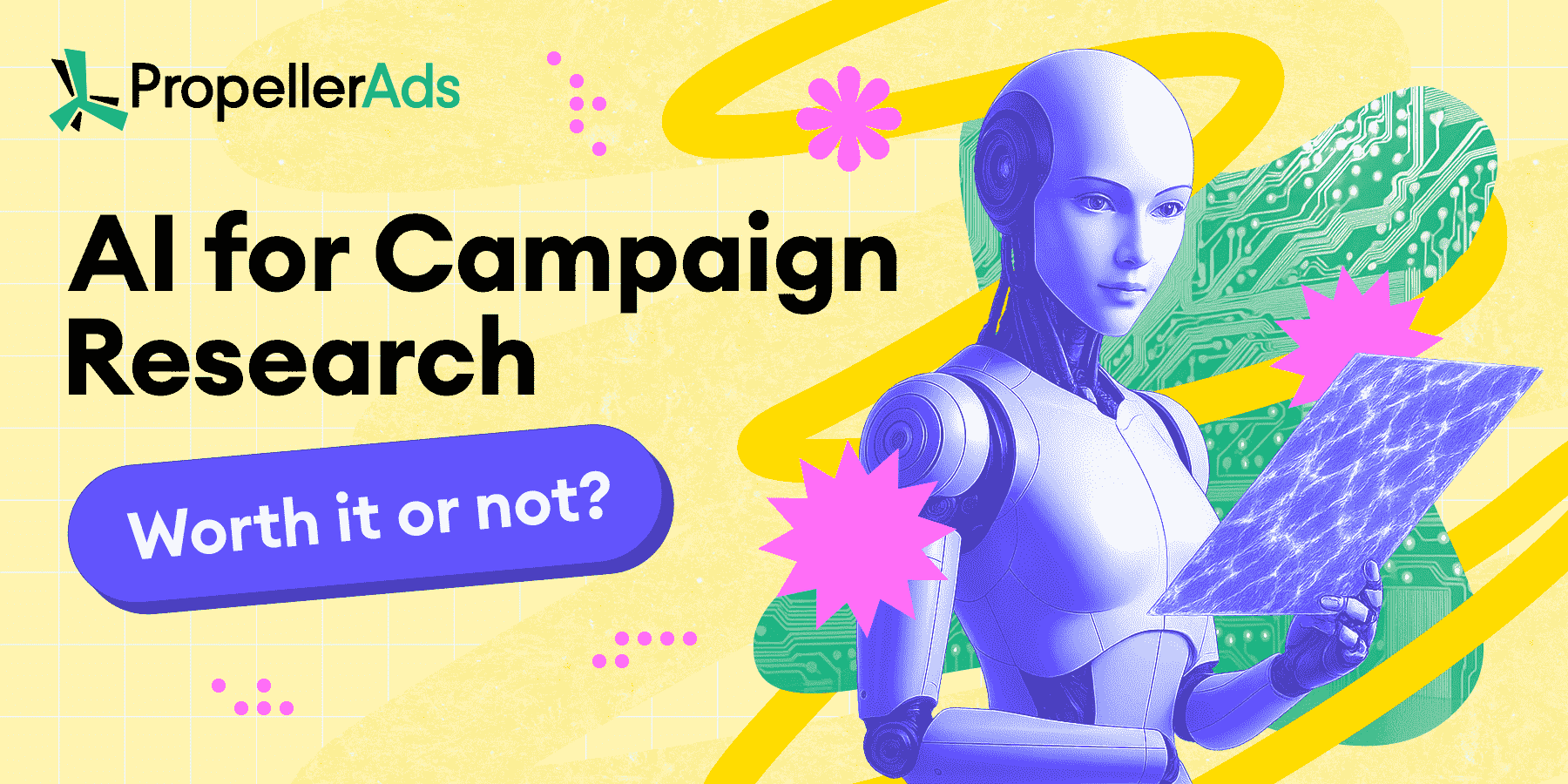
Tired of manual work and red eyes from hours spent in spy tools? Well, you are lucky: times have changed. AI isn’t just for generating catchy creatives — though it does that fast and well.
Today, it can help you automate the entire workflow: from building angles, launching campaigns, testing variations to optimizing bids and scaling winners.
Can you really replace most of your job as a media buyer, or is it just another piece of cyberpunk-inspired speculation? Let’s take a closer look at the tools affiliates actually use and what they really think.
What Problems Do Affiliates Have To Solve With AI?
If you think that AI is only capable of bad jokes and cheesy creatives, you are outdated. Today, it can perform as a fully-fledged assistant, and even replace your most greedy media buyer, who asks you for bigger and bigger salary every couple of weeks.
Here is what AI can do in general:
- Research the new bundles. As AI knows how to work with a huge amount of data, it can do a big part of the research for you, coming up with ready suggestions on GEOs, offers, and creatives that might most likely work out. As George Click, one of PropellerAds’ partners, shared, ‘I still trust my guts and experience way more, but I do use AI to toss around some of my ideas – not to form a full funnel, just spark thoughts.’
- Analyze spy tools. Of course, you can scroll AdPlexity without any help from AI, but this means manually sifting through thousands of creatives, which is time-consuming, easy to miss patterns, and hard to scale.
- Analyze statistics. Again, some media buyers are pretty much fine with what trackers offer inside their stat-boards. However, as George puts it, AI definitely could be used here if you run multiple platforms/sources and need to compare fast and large layers of data.
George: I believe that this part with AI usage would probably be the most significant one, because machines can calculate numbers and compare different setups/bids/payout changes way better and faster. Guilty as I am – have a good case, when I was digging into a quarterly performance report with 50 graphs and 255 lines of data to find a day when ROI started to drop, and trying to find a reason for it. Turned out that one of the partners cut the payout via API (without any notification), and it led to an overall ROI change.
- Optimize campaigns. Many affiliates set up bidding scripts that react to ROI changes or traffic quality and help quickly optimize your targeting. However, as some think, it’s a hard no for creatives: many traffic sources don’t allow API-based creative updates, and AI-generated graphics still require manual review to avoid mistakes. Besides, AI can assist you with forecasting during the scaling phase, offering insights on potential markets or angles.
George: I sometimes use AI to get a forecast or second opinion on where to go next, but I always rely on my own judgment first.
How to Use AI for Media Buying: Different Options for Different Tasks
Now that you’ve seen what kind of opportunities AI can give media buyers, let’s take a look at the tools and workflows that affiliates are already using to automate their routine.
GPT-based AI bots
Yes, we are talking about the apps you’re probably already familiar with: ChatGPT, Grok, DeepSeek, and others. They can not just answer your quick questions, but can be trained in a way to act as your personal assistant and help you plan, optimize, or scale your campaigns.
As the Zombie Traffic channel owner claimed, he’s trained ChatGPT to work with affiliate marketing, and now it acts like a mid-level media buyer sitting right next to him. How did he do it? Here is a quick guide:
- He showed his campaigns’ statistics so that the bot knows how to analyze specific metrics of the buyer’s offers;
- He taught it to analyze statistics by sending various breakdowns – for example, by age, GEO, or ad placements, etc. – and this is how the bot learned to give recommendations on stats;
- He sent it different creatives, and now the bot can analyze them. For example, it can explain why a creative’s performance suddenly dropped or improved at a certain point in time.
- He explained to the audience to the bot: detailed the target demographics like age, interests, or pain points; shared his own insights and real-world experience about what works and why, etc. This way, the bot learned to understand the specifics of the offer and its audience.
As a result, ChatGPT can now help him with creatives, audience targeting, and even choosing the offers if given the proper data.
As the buyer says, the bot has become quite reliable after a couple of months of training: it’s like having a pretty skilled media buyer’s assistant by your side.
AI Agents
AI agents are more sophisticated and trained helpers. Their main difference from a chatbot is that they can work autonomously, not just answer the questions you ask.
So, they can parse websites, collect information, run tests, analyze statistics – all that is triggered automatically under certain conditions, without waiting for you to ask.
Here are some examples of what AI agents can do:
- Pick offers by selected criteria – GEO, payout, hold, approve rates – by scanning various CPA networks
- Filter traffic before campaign launch – ban bots, collect black and whitelists even before the first click
- Monitor campaigns – if there is a CTR or CPM drop, an agent sends you a message to, say, Telegram
- Test creatives – not just generate images, but initiate a split test and interpret the results
Here is one case study shared at FBkilla by the Bearded CPA channel owner. Their team had an issue: there was a script that could add the offers to trackers automatically, but this required the right format (JSON). Meanwhile, buyers sent the offer information in various formats without any strict rules, which spoiled the whole automation process.
How was it solved?
- The team used n8n – an open-source automation tool that lets you connect apps and APIs into custom workflows without heavy coding. It’s like a robot constructor – a visual tool where you can create a chain of actions, like this:
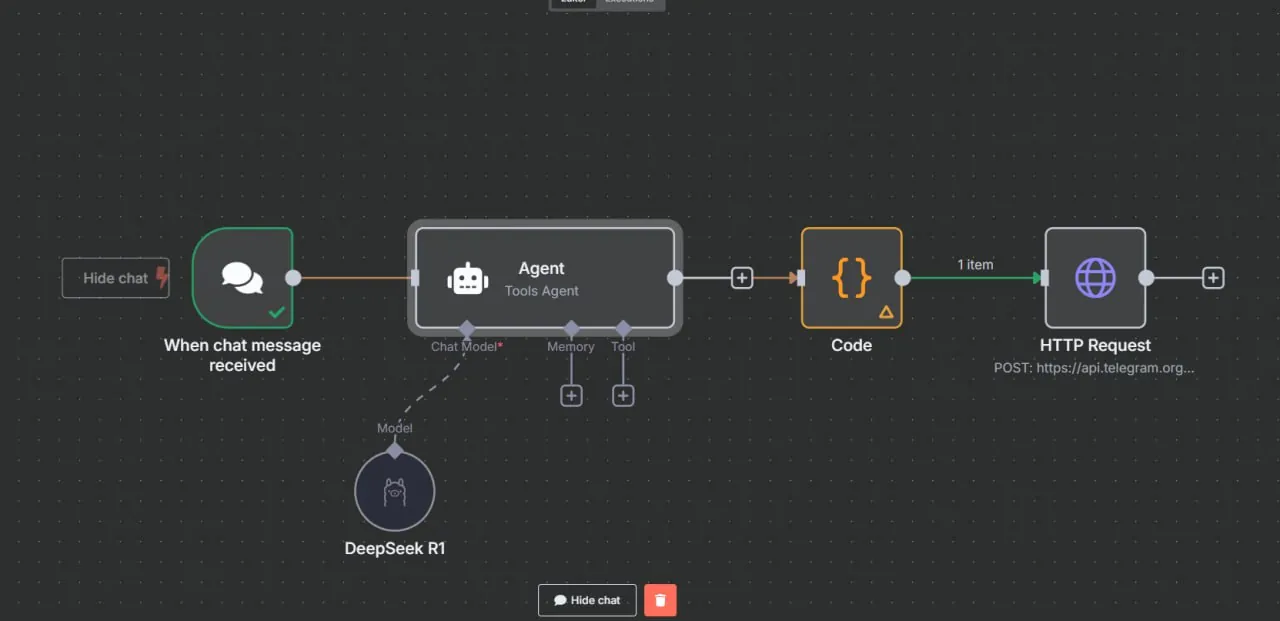
Image source: Bearded CPA Channel
- Then, they connected DeepSeek to the flow and created a system prompt. In very simple words, this was something like saying to DeepSeek, ‘When you get any message related to adding an offer, read it, rewrite it in the right JSON format, and send an API request.’ You can see the prompt example in the channel.
- All of this was connected to Telegram. As a result, the AI checks incoming messages in a specific Telegram chat and gets it when someone asks to add an offer — no matter how they phrase it. Then it sorts the data, sends an HTTP request to the API, and replies right there in Telegram.
Another example of an AI agent for affiliate marketers is BraiN Assistant. It can search information about your offers, competitors, or other insights from any verticals, and also create a knowledge base from your own files.
Overall, such tools definitely reshape the approach towards the work of affiliate marketers. One media buyer, the owner of the Yellow Web Telegram Channel, says there’s a high chance that big media buying teams are definitely developing AI buyers – still a bit rough and needing supervision, but working.
Yellow Web: ‘AI can now control any anti-detect browser via tools like Selenium and use APIs from platforms like Facebook and Keitaro. So, it can log in, navigate interfaces, analyze data, spy on ad creatives, launch and scale campaigns, and run tests. The main challenge remains video — both generating and analyzing it — due to hardware and algorithm limits. But this is improving fast.
Overall, a buyer’s job will shift to spotting trends and letting AI handle the rest, simply repeating the cycle. People will still handle bizdev, minor tech tasks like adding offers from new advertisers or affiliate networks, preparing accounts, and pushing apps into stores. Even those last two will likely become cheaper to automate over time.’
Bots, Scripts, Plugins with an AI backend
These are solutions where AI works in the background – not autonomously – and helps to process data, draw some conclusions, or automate certain actions.
Here is an example: a Reddit user has developed a ChatGPT plugin to optimize ad copy and simplify work with spy tools. The point is to avoid tedious manual jobs: signing up for paid tools like SEMRush or iSpionage, scanning them for ads, and copying texts.
Meanwhile, the plugin can automate the process: it switches to services via API and receives data on competitors’ ad creatives – texts, headings, keywords. A media buyer is only left to send a request to ChatGPT, asking for something like ‘enhance this ad copy,’ and the plugin uses the information it received to generate an optimized ad copy.
And that’s just the beginning. There’s also the idea of a smart monitoring bot powered by AI written with the help of ChatDev or DevGPT.
In theory, this kind of bot could automatically collect info like:
- which offers are currently active
- in which GEOs and on what formats (push, pop, native)
- what creatives are being used and how often they’re relaunched
- and where saturation is starting to show
With this data, combined with a bit of logic or a lightweight AI backend, the bot could answer practical questions like:
“Where is offer X being run right now?”
→ Pulled from spy tools via API (e.g., Adplexity, Anstrex), or scraped via headless browser: offer → GEO → source → format.
But these useful, yet complex solutions are still not widely implemented in this specific form. As Serge Abramov, a media buyer, puts it,
‘It’s really hard to gather and analyze such kind of data properly on a small scale – no matter if it’s AI or human work. A bot like that would either have to pull from spy tools or monitor ad feeds in networks (which is basically what spy tools do anyway). So it’s more like an extra layer on top of existing spy tools — which already have data that might be messy or incomplete, and you’d still need to figure out how to work with it.’
To Wrap It Up
An AI assistant for affiliate marketing and media buying is no longer a fantasy — it’s already being used. Sure, many still rely on gut feeling, experience, and manual digging. But the trend is clear: more and more teams are testing smart tools to save time and spot insights faster.
Chances are, AI won’t replace your media buyer — it’ll just become their sharpest sidekick.
Join our Telegram for more insights and share your ideas with fellow-affiliates!
